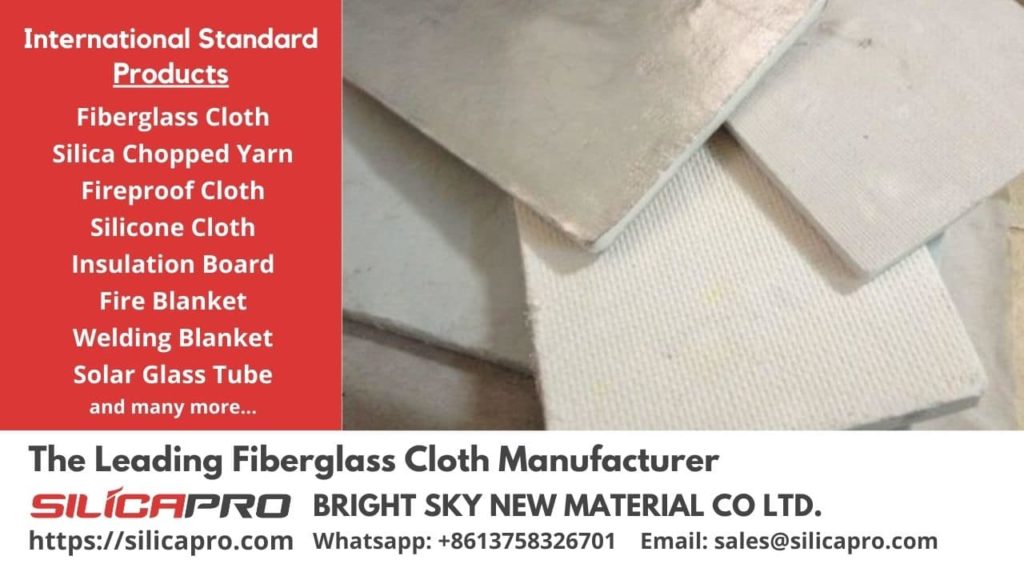
Fiberglass is a material used in the manufacture of various industrial and individual goods. One of them is used for making airplanes. Fiberglass for aircraft is used because it has lightweight. In addition, this material is environmentally friendly, so it does not cause pollution in various places.
Fiberglass material is made of glass fiber which consists of several types, depending on the use. It contains silica, calcium, and several other compounds, making this material quite strong. Compared to carbon fiber, this material has better strength. In addition, the advantage of using this material is that it is resistant to corrosion.
Contents
Commonly Used In The Aircraft Industry
Fiberglass for aircraft is often used. Usually, components with a fiberglass base are called composite materials. Characteristically, this material can survive in its original identity, not completely mixed with other materials. There are several types of composite materials for aircraft, including carbon fiber, fiberglass, and matrix systems.
Fiberglass is one of the most commonly used composite materials in the manufacture of aircraft. This material was also the first to be used in cars and ships. It was first used widely around 1950.
The History Of The Use Of Fiberglass For Airplanes
Fiberglass is known to have been used for decades, especially for cars, ships, and airplanes. Composite materials have been around since World War II, including fiberglass. Along with the times, this mixed material is getting more and more attention and is becoming popular. So the use of this material in aircraft is very easy to find.
In addition to airplanes, this material is also often found in gliders. For use in aircraft, this material controls 50% to 70% of the aircraft. That means fiberglass for aircraft plays a very important role in the manufacture of this one means of transportation.
Fiberglass material was first used around 1950 on a Boeing-type aircraft. One of the uses of fiberglass is in the 2012 Boeing 787 Dreamliner. They state that 50% of aircraft are made of fiberglass. Increasingly, manufacturers are incorporating composite materials into their aircraft products.
Although this material is increasingly being used in the aircraft industry, it is not impossible to have risks. Besides bringing many benefits, this material also has drawbacks. The following will be explained further.
Advantages Of Fiberglass For Aircraft
The first advantage of using fiberglass for aircraft is that it is lightweight. That is, with the use of this material, the heavy load on the aircraft can be reduced. This is the biggest advantage, so many companies are using this material. In addition, there are other advantages to using this material.
The matrix system consists of fibers, making this material better strength than aluminum. Fiberglass also provides a smoother surface. So there is no need to do additional treatment to smooth the surface—one more great advantage of using this material, which is efficient in the use of fuel.
Composite materials or materials are not easily corroded, including this fiberglass. This material is also resistant to cracking and can withstand bending conditions. Compared to aluminum, this material has a design that can last longer. So that in its use it also does not require special maintenance or repairs.
Disadvantages Of Using Fiberglass For Aircraft
Composite materials, especially fiberglass, are not easily broken or corroded. However, this makes it difficult to examine the inside of the material. Whether the material is internally damaged or not. This can lead to higher risk if a dangerous condition occurs.
Unlike the aluminum material, which has the property of being easily bent, it can detect damage to the inside. If the material or composite material such as fiberglass is damaged, the repair will be more difficult. So it costs more to repair the damaged surface.
Resin, a compound contained in fiberglass, will easily weaken, especially at a temperature of 150⁰. This causes the aircraft to take action before a fire occurs. As is known, fires caused by composite materials such as fiberglass for aircraft can produce smoke.
The smoke released contains toxins that are scattered in the air. This can cause health problems in humans who breathe the air around them. Meanwhile, at temperatures above 300⁰, it can cause failure in the structural system. Of course, this is a big risk for a flight.
Some people may think that the price of fiberglass is expensive. But along with quality, high costs will be savings in the long term. Therefore, the use of this material is increasingly being applied to aircraft, to get all the benefits.
Silicapro, a company that provides fiberglass for aircraft with various advantages in it. We serve sales to several countries by ensuring the safety and security of goods. The prices we offer can also compete with others. To get the best products and prices from us, please contact us, via e-mail or Whatsapp that has been listed.
